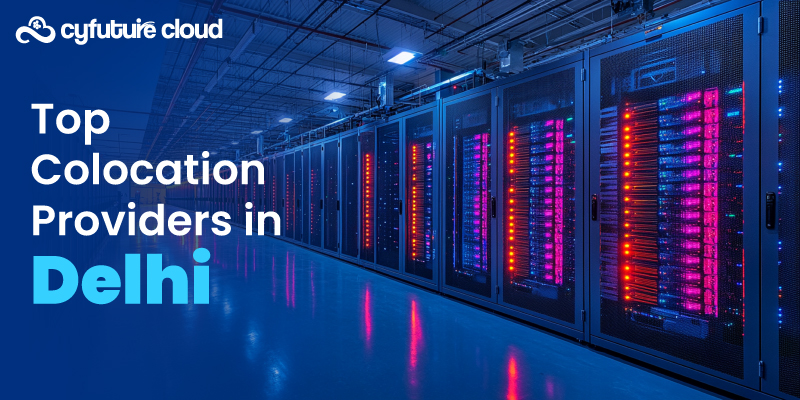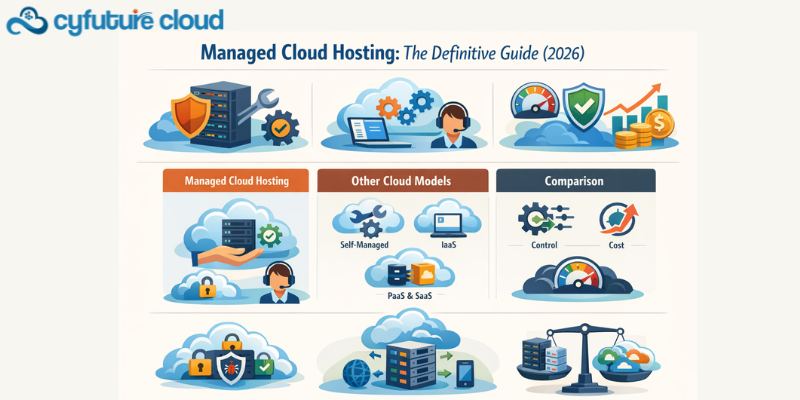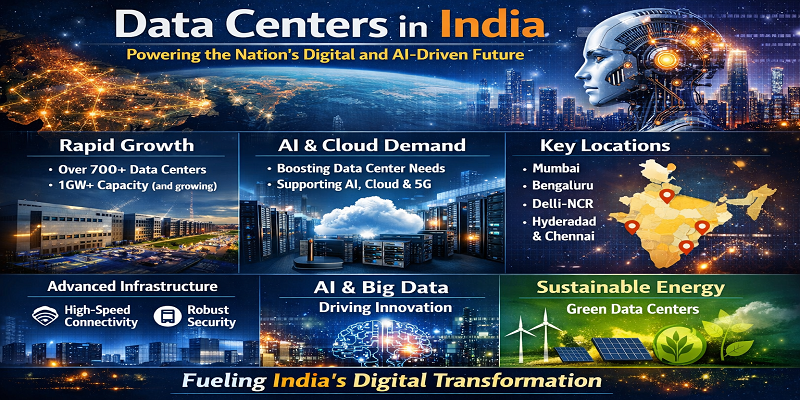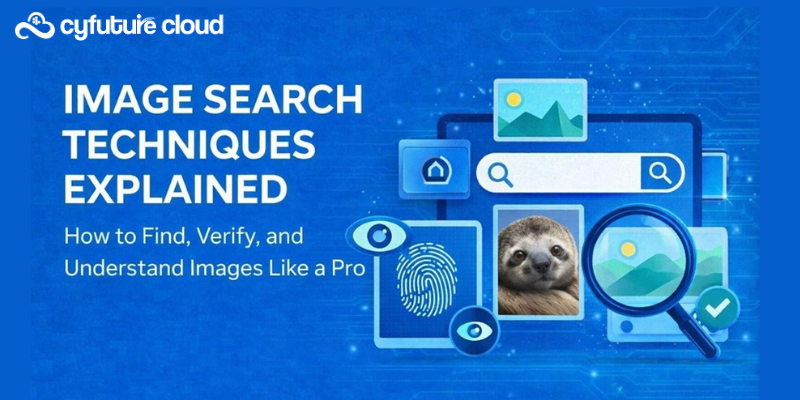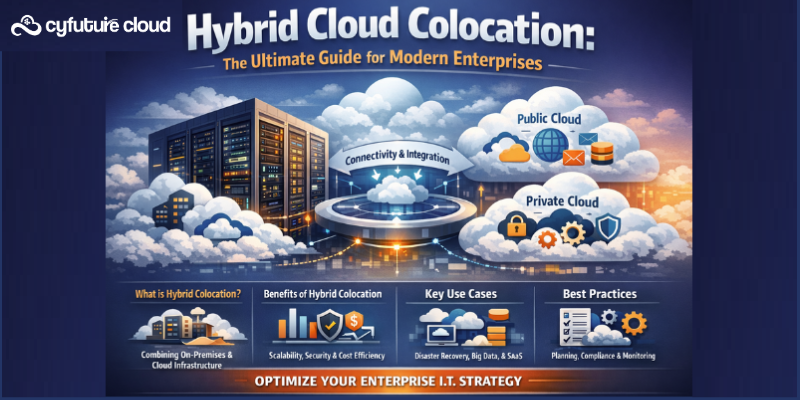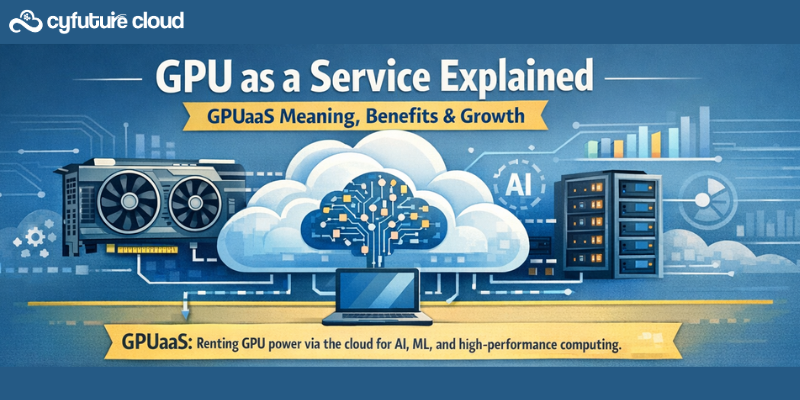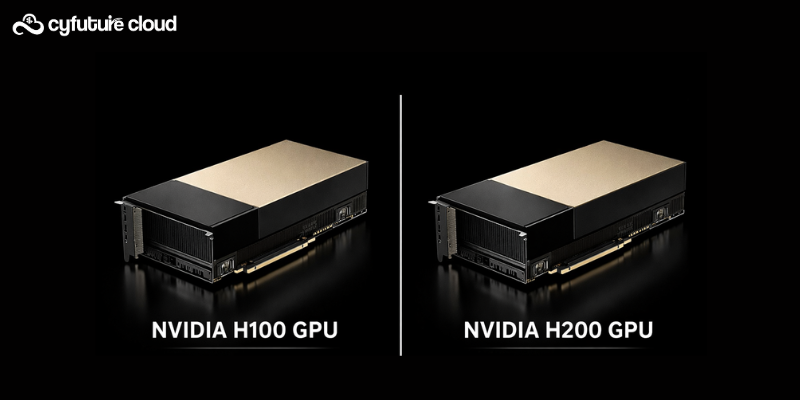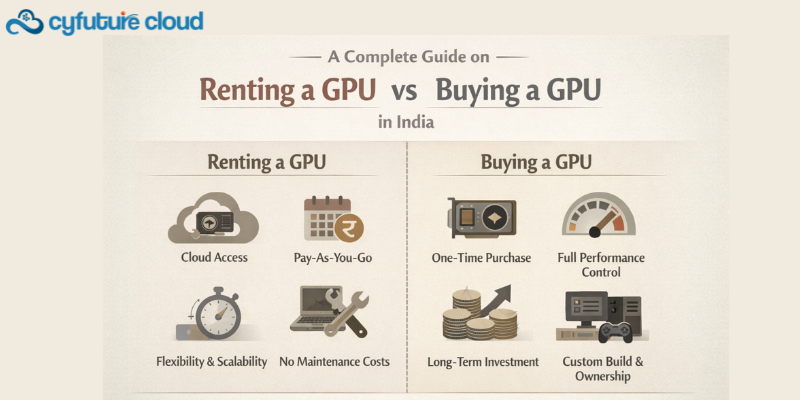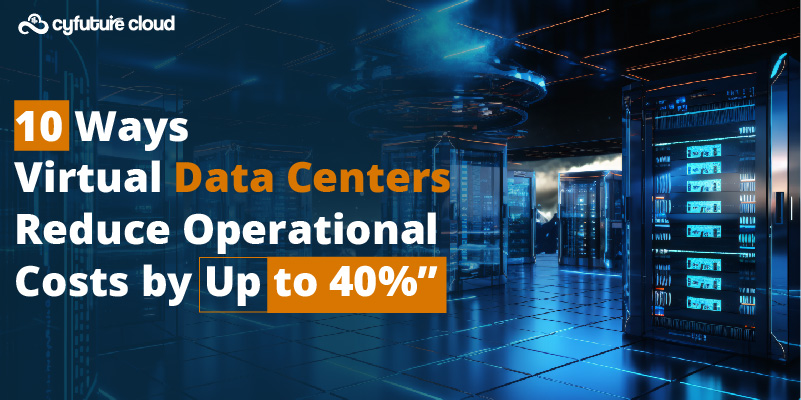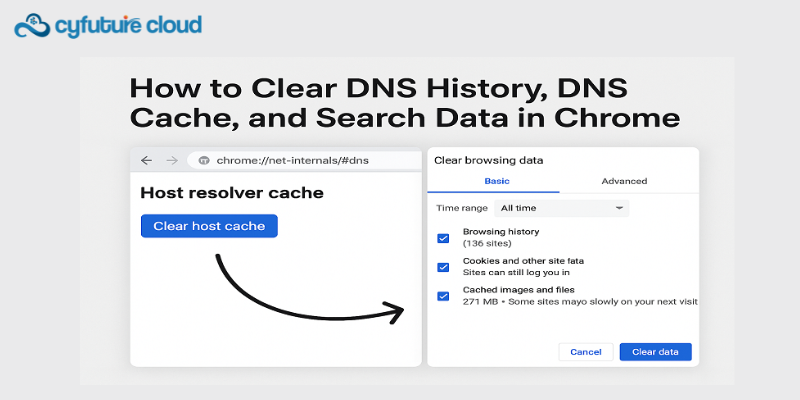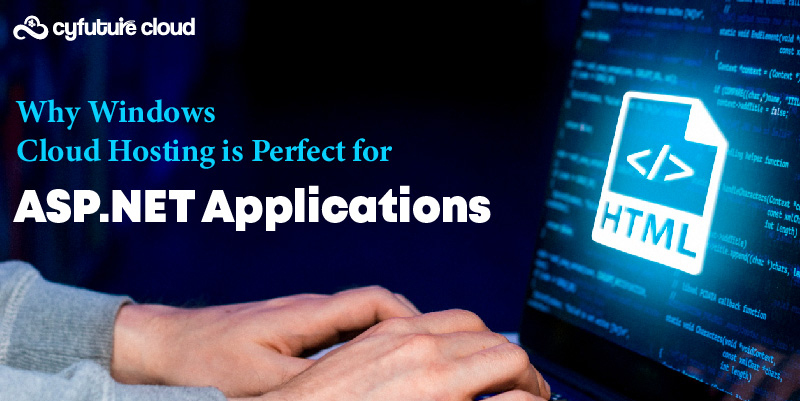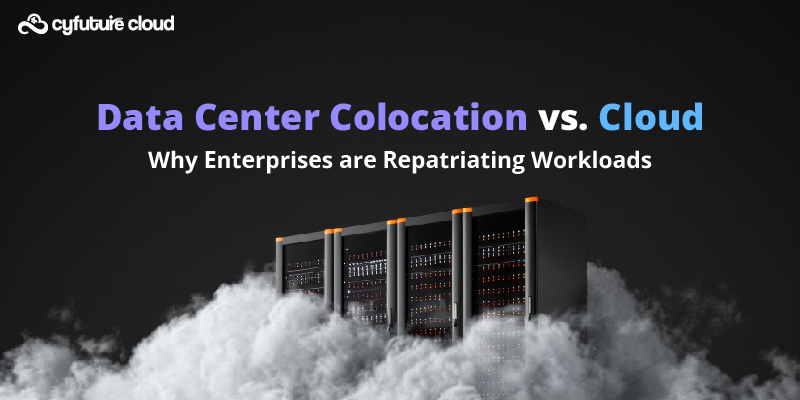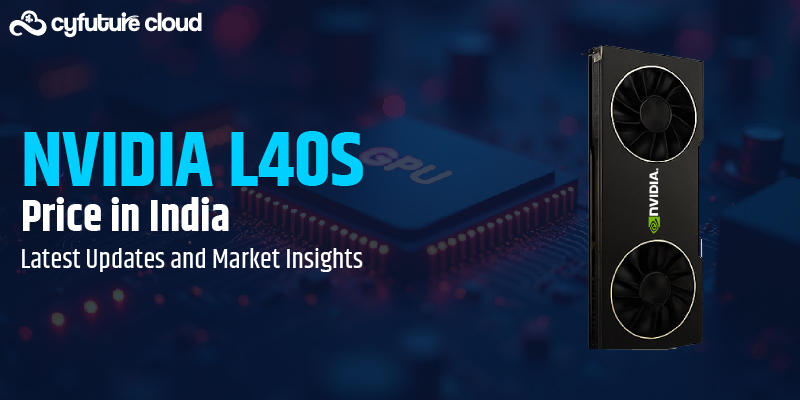Get 69% Off on Cloud Hosting : Claim Your Offer Now!
- Products
-
Compute
Compute
- Predefined TemplatesChoose from a library of predefined templates to deploy virtual machines!
- Custom TemplatesUse Cyfuture Cloud custom templates to create new VMs in a cloud computing environment
- Spot Machines/ Machines on Flex ModelAffordable compute instances suitable for batch jobs and fault-tolerant workloads.
- Shielded ComputingProtect enterprise workloads from threats like remote attacks, privilege escalation, and malicious insiders with Shielded Computing
- GPU CloudGet access to graphics processing units (GPUs) through a Cyfuture cloud infrastructure
- vAppsHost applications and services, or create a test or development environment with Cyfuture Cloud vApps, powered by VMware
- Serverless ComputingNo need to worry about provisioning or managing servers, switch to Serverless Computing with Cyfuture Cloud
- HPCHigh-Performance Computing
- BaremetalBare metal refers to a type of cloud computing service that provides access to dedicated physical servers, rather than virtualized servers.
-
Storage
Storage
- Standard StorageGet access to low-latency access to data and a high level of reliability with Cyfuture Cloud standard storage service
- Nearline StorageStore data at a lower cost without compromising on the level of availability with Nearline
- Coldline StorageStore infrequently used data at low cost with Cyfuture Cloud coldline storage
- Archival StorageStore data in a long-term, durable manner with Cyfuture Cloud archival storage service
-
Database
Database
- MS SQLStore and manage a wide range of applications with Cyfuture Cloud MS SQL
- MariaDBStore and manage data with the cloud with enhanced speed and reliability
- MongoDBNow, store and manage large amounts of data in the cloud with Cyfuture Cloud MongoDB
- Redis CacheStore and retrieve large amounts of data quickly with Cyfuture Cloud Redis Cache
-
Automation
Automation
-
Containers
Containers
- KubernetesNow deploy and manage your applications more efficiently and effectively with the Cyfuture Cloud Kubernetes service
- MicroservicesDesign a cloud application that is multilingual, easily scalable, easy to maintain and deploy, highly available, and minimizes failures using Cyfuture Cloud microservices
-
Operations
Operations
- Real-time Monitoring & Logging ServicesMonitor & track the performance of your applications with real-time monitoring & logging services offered by Cyfuture Cloud
- Infra-maintenance & OptimizationEnsure that your organization is functioning properly with Cyfuture Cloud
- Application Performance ServiceOptimize the performance of your applications over cloud with us
- Database Performance ServiceOptimize the performance of databases over the cloud with us
- Security Managed ServiceProtect your systems and data from security threats with us!
- Back-up As a ServiceStore and manage backups of data in the cloud with Cyfuture Cloud Backup as a Service
- Data Back-up & RestoreStore and manage backups of your data in the cloud with us
- Remote Back-upStore and manage backups in the cloud with remote backup service with Cyfuture Cloud
- Disaster RecoveryStore copies of your data and applications in the cloud and use them to recover in the event of a disaster with the disaster recovery service offered by us
-
Networking
Networking
- Load BalancerEnsure that applications deployed across cloud environments are available, secure, and responsive with an easy, modern approach to load balancing
- Virtual Data CenterNo need to build and maintain a physical data center. It’s time for the virtual data center
- Private LinkPrivate Link is a service offered by Cyfuture Cloud that enables businesses to securely connect their on-premises network to Cyfuture Cloud's network over a private network connection
- Private CircuitGain a high level of security and privacy with private circuits
- VPN GatewaySecurely connect your on-premises network to our network over the internet with VPN Gateway
- CDNGet high availability and performance by distributing the service spatially relative to end users with CDN
-
Media
-
Analytics
Analytics
-
Security
Security
-
Network Firewall
- DNATTranslate destination IP address when connecting from public IP address to a private IP address with DNAT
- SNATWith SNAT, allow traffic from a private network to go to the internet
- WAFProtect your applications from any malicious activity with Cyfuture Cloud WAF service
- DDoSSave your organization from DoSS attacks with Cyfuture Cloud
- IPS/ IDSMonitor and prevent your cloud-based network & infrastructure with IPS/ IDS service by Cyfuture Cloud
- Anti-Virus & Anti-MalwareProtect your cloud-based network & infrastructure with antivirus and antimalware services by Cyfuture Cloud
- Threat EmulationTest the effectiveness of cloud security system with Cyfuture Cloud threat emulation service
- SIEM & SOARMonitor and respond to security threats with SIEM & SOAR services offered by Cyfuture Cloud
- Multi-Factor AuthenticationNow provide an additional layer of security to prevent unauthorized users from accessing your cloud account, even when the password has been stolen!
- SSLSecure data transmission over web browsers with SSL service offered by Cyfuture Cloud
- Threat Detection/ Zero DayThreat detection and zero-day protection are security features that are offered by Cyfuture Cloud as a part of its security offerings
- Vulnerability AssesmentIdentify and analyze vulnerabilities and weaknesses with the Vulnerability Assessment service offered by Cyfuture Cloud
- Penetration TestingIdentify and analyze vulnerabilities and weaknesses with the Penetration Testing service offered by Cyfuture Cloud
- Cloud Key ManagementSecure storage, management, and use of cryptographic keys within a cloud environment with Cloud Key Management
- Cloud Security Posture Management serviceWith Cyfuture Cloud, you get continuous cloud security improvements and adaptations to reduce the chances of successful attacks
- Managed HSMProtect sensitive data and meet regulatory requirements for secure data storage and processing.
- Zero TrustEnsure complete security of network connections and devices over the cloud with Zero Trust Service
- IdentityManage and control access to their network resources and applications for your business with Identity service by Cyfuture Cloud
-
-
Compute
- Solutions
-
Solutions
Solutions
-
 Cloud
Hosting
Cloud
Hosting
-
 VPS
Hosting
VPS
Hosting
-
GPU Cloud
-
 Dedicated
Server
Dedicated
Server
-
 Server
Colocation
Server
Colocation
-
 Backup as a Service
Backup as a Service
-
 CDN
Network
CDN
Network
-
 Window
Cloud Hosting
Window
Cloud Hosting
-
 Linux
Cloud Hosting
Linux
Cloud Hosting
-
Managed Cloud Service
-
Storage as a Service
-
 VMware
Public Cloud
VMware
Public Cloud
-
 Multi-Cloud
Hosting
Multi-Cloud
Hosting
-
 Cloud
Server Hosting
Cloud
Server Hosting
-
 Bare
Metal Server
Bare
Metal Server
-
 Virtual
Machine
Virtual
Machine
-
 Magento
Hosting
Magento
Hosting
-
Remote Backup
-
 DevOps
DevOps
-
 Kubernetes
Kubernetes
-
 Cloud
Storage
Cloud
Storage
-
NVMe Hosting
-
 DR
as s Service
DR
as s Service
-
-
Solutions
- Marketplace
- Pricing
- Resources
- Resources
-
By Product
Use Cases
-
By Industry
- Company
-
Company
Company
-
Company
How Visual AI Is Transforming the Future of eCommerce?
Table of Contents
Shopping has come a long way from crowded aisles and long checkout queues. Today, we can shop with a few taps on our smartphones—thanks to the constant evolution of technology. Among the latest game-changers in online retail is Visual AI, an exciting frontier of artificial intelligence that’s revolutionizing how we browse, buy, and engage with brands online.
What makes Visual AI truly powerful is its ability to mimic human sight and interpret visual data with incredible precision. This means no more keyword-heavy searches or vague descriptions to find that perfect outfit or gadget. With Visual AI, a snapshot is enough to get the results you’re looking for—fast, relevant, and on-point.
In this blog, we’ll explore how Visual AI is shaping the future of eCommerce, from product discovery to post-purchase experience. We’ll also look at how this technology integrates with AI Cloud platforms and how AI-Powered Data Centers make it scalable for retailers of all sizes.
By the end, you’ll have a solid understanding of:
- What is Visual AI, and how it works
- Key areas where Visual AI is being applied in eCommerce
- How it enhances customer experience and boosts conversions
- Why it’s essential for modern eCommerce success
- A concrete solution to help your business implement Visual AI today
Let’s dive right in.
What Is Visual AI?
Visual AI refers to using artificial intelligence to analyze, understand, and generate insights from visual content like images and videos. It combines computer vision, deep learning, and machine learning to mimic human sight but with far more precision and speed.
Unlike traditional AI, which works with numbers and text, Visual AI works with pixels, shapes, and patterns. It can detect objects, recognize faces, understand scenes, and even identify emotions in photos.
How It Works in eCommerce
In eCommerce, Visual AI interprets visual data (product images, user-uploaded photos, etc.) and connects it with relevant actions—like product recommendations, visual search results, and automatic tagging.
For example, a user uploads a photo of a jacket they like. Visual AI analyzes that image and instantly finds similar products in the store’s inventory. No need to type “black leather jacket for men with zipper and pockets” anymore.
Visual AI in Action: Key Use Cases in eCommerce
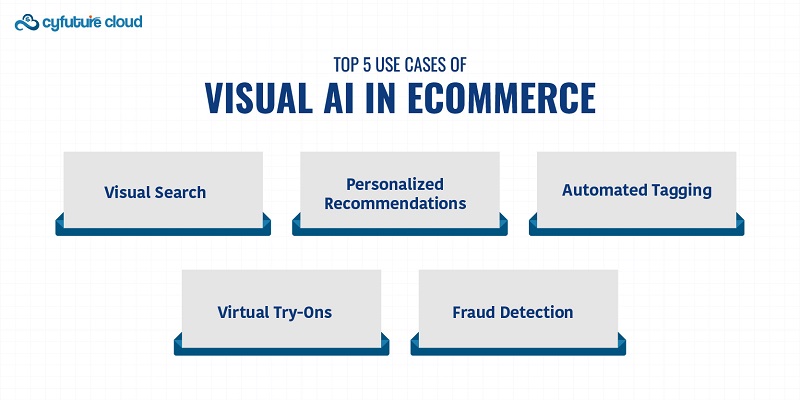
Visual Search and Product Discovery
Visual search is the most impactful use case of Visual AI in eCommerce. Instead of typing in search queries, users can upload or click a picture and let the system do the rest.
Use Case Example:
A shopper sees a dress on Instagram but doesn’t know where to buy it. She uploads the screenshot to an eCommerce website powered by Visual AI, and voila—she gets a list of matching or similar dresses available to purchase.
Benefits:
- Reduces friction in product search
- Improves accuracy of search results
- Boosts customer satisfaction
Also Read : Impacts of Artificial Intelligence in Everyday Life
Personalized Recommendations
Visual AI takes personalization to the next level. It doesn’t just track what users click or buy—it understands their style preferences based on the images they interact with.
Moreover, by analyzing visual data in user behavior, Visual AI can create dynamic recommendation engines that show products that match their exact aesthetic.
Automated Image Tagging and Catalog Management
Gone are the days of manually tagging thousands of product photos. Visual AI can automatically analyze and tag product attributes like color, texture, pattern, neckline, sleeve length, etc.
In addition, this leads to better filtering and search functions on the website, making navigation smoother for users.
Virtual Try-Ons and Augmented Reality
Visual AI powers virtual fitting rooms and try-on experiences. From glasses and shoes to makeup and furniture, users can now see how products look on them or in their space before purchasing.
This helps reduce returns and enhances confidence in online buying decisions.
Fraud Detection and Quality Control
Visual AI also contributes to backend operations by spotting defects in product images, detecting counterfeit items, and ensuring brand consistency across all product listings.
AI Data Centers play a critical role here by handling high volumes of visual data securely and efficiently.
Why eCommerce Brands Are Investing in Visual AI
Enhanced Customer Experience
Visual AI minimizes the guesswork in online shopping. Whether it’s finding the right product or getting personalized suggestions, customers enjoy a faster, more intuitive journey.
Improved Conversion Rates
Shoppers who use visual search or virtual try-ons are more likely to convert. These tools eliminate doubts and help customers make quicker decisions.
Reduced Return Rates
By helping buyers visualize their purchases more accurately, Visual AI significantly reduces return rates, saving both retailers and customers money.
Scalable with AI Cloud Infrastructure
Visual AI demands powerful computational resources. By cloud hosting it on an AI Cloud infrastructure, retailers can scale their operations seamlessly and cost-effectively. Cloud platforms provide real-time updates, fast deployment, and integration with existing tools.
The Role of AI Cloud & AI Powered Data Centers
Implementing Visual AI isn’t just about software; it also needs robust infrastructure.
AI Cloud
AI Cloud services allow eCommerce businesses to tap into pre-trained AI models and APIs without building them from scratch. These services offer flexibility, real-time analytics, and fast deployment.
Benefits:
- Reduced time-to-market
- Pay-as-you-go pricing models
- Easily integrates with the existing tech stack.
AI-Powered Data Center
Handling large-scale visual data requires performance at scale. That’s where AI Powered Data Centers come in. These centers are optimized for AI workloads, offering faster processing speeds, higher storage capabilities, and better energy efficiency.
They also ensure data security, a top concern in today’s privacy-first world.
Challenges in Adopting Visual AI (And How to Overcome Them)
Even though Visual AI holds great promise, it does come with challenges:
- High computational needs
- Integration complexity
- Data privacy concerns
- Initial setup costs
However, these can be overcome by choosing the right technology partner who understands the unique needs of your business.
Conclusion: The Future of eCommerce Is Visual, Intelligent & Cloud-Powered
There’s no denying it—Visual AI is here to stay, redefining what shopping means in the digital age. From offering a seamless product discovery experience to powering virtual try-ons, Visual AI is helping businesses convert browsers into buyers faster and more efficiently.
But to truly harness the power of Visual AI, you need the proper infrastructure. That’s where Cyfuture Cloud steps in.
Our AI Cloud and AI-Powered Data Centers are designed to support next-gen technologies like Visual AI, helping eCommerce businesses scale, innovate, and stay competitive.
Whether you’re a startup or an enterprise-level retailer, Cyfuture Cloud provides a plug-and-play solution that makes Visual AI adoption hassle-free and future-ready.
Recent Post

Stay Ahead of the Curve.
Join the Cloud Movement, today!
© Cyfuture, All rights reserved.
Send this to a friend

 Pricing
Calculator
Pricing
Calculator
 Power
Power
 Utilities
Utilities VMware
Private Cloud
VMware
Private Cloud VMware
on AWS
VMware
on AWS VMware
on Azure
VMware
on Azure Service
Level Agreement
Service
Level Agreement 
